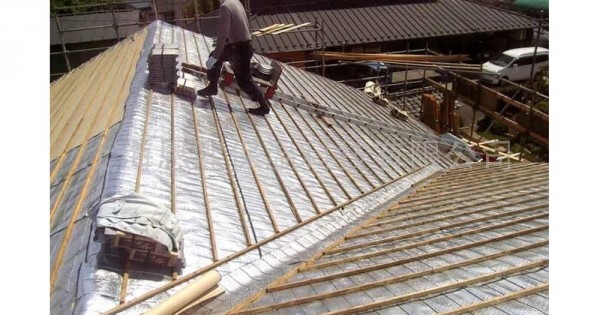Introduction
As the scorching rays of the sun intensify with each passing year, keeping our homes cool becomes an increasingly challenging task. Rising temperatures not only affect our comfort but also impact our energy bills and carbon footprint. One effective solution gaining popularity in recent times is roof heat-proofing. In this article, we will explore the concept of roof heat-proofing, its benefits, and how it can help you create a more comfortable and energy-efficient home.
Understanding Roof Heat-Proofing
- What is Roof Heat-Proofing?
Roof heat-proofing is a specialized technique aimed at reducing heat absorption by the roof, thus preventing the transfer of excess heat to the living spaces below. This process involves the application of reflective coatings or materials to the roof’s surface, which reflects a significant portion of the sun’s rays back into the atmosphere, rather than absorbing them.
- How Does It Work?
The primary principle behind roof heat-proofing is the use of reflective materials, such as elastomeric coatings or cool roof paints. These coatings are designed to have high solar reflectance and thermal emittance properties. Solar reflectance refers to the roof’s ability to reflect sunlight, while thermal emittance refers to its ability to release absorbed heat. By combining these characteristics, roof heat-proofing can keep the roof’s temperature significantly lower, thus reducing the amount of heat transferred inside the building.
The Benefits of Roof Heat-Proofing
- Improved Indoor Comfort
One of the most significant advantages of roof heat-proofing is the improved indoor comfort it offers. By reducing heat transfer through the roof, the living spaces beneath remain cooler, even during the hottest days of summer. This helps create a more pleasant living environment, enhances sleep quality, and reduces the reliance on air conditioning systems, leading to lower energy costs.
- Energy Efficiency and Cost Savings
With roof heat-proofing in place, the need for constant air conditioning to maintain a comfortable indoor temperature decreases. As a result, homeowners can experience substantial energy savings, especially during peak summer months when cooling costs can soar. Over time, these energy savings can offset the initial investment in roof heat-proofing, making it a financially prudent choice.
- Environmental Impact
Reducing the energy consumption of cooling systems not only benefits homeowners financially but also has a positive impact on the environment. By cutting down on electricity usage, roof heat-proofing helps reduce greenhouse gas emissions from power plants, contributing to efforts in combating climate change and promoting a more sustainable future.
- Extended Roof Lifespan
High temperatures and prolonged exposure to the sun’s UV rays can take a toll on the roof’s structural integrity. By installing heat-proofing measures, the roof’s surface is better protected from thermal stress, which can lead to cracks, warping, and premature deterioration. A well-maintained, heat-protected roof can last longer and require fewer repairs over its lifetime.
- Increased Property Value
Energy-efficient features have become highly desirable among potential homebuyers. By investing in roof heat-proofing, homeowners not only enjoy the benefits of reduced energy bills but also enhance the overall value of their property. An energy-efficient home with a heat-proofed roof is an attractive selling point and can set your property apart in a competitive real estate market.
Roof Heat-Proofing Techniques and Options
- Cool Roof Coatings
Cool roof coatings are a popular choice for roof heat-proofing. These coatings are typically white or light-colored, as they have higher solar reflectance properties compared to traditional dark-colored roofs. They work by reflecting a larger percentage of sunlight away from the roof, keeping it cooler even in intense sunlight.
- Green Roofs
Green roofs, also known as living roofs or eco-roofs, are another innovative approach to roof heat-proofing. In this technique, a layer of vegetation is installed on the roof, creating a natural barrier against heat absorption. The plants and soil on the green roof absorb and evaporate some of the heat, reducing the overall temperature of the building.
- Roof Insulation
While not strictly a heat-proofing technique, adequate roof insulation plays a crucial role in maintaining indoor comfort and energy efficiency. Insulation prevents heat transfer from the roof to the interior of the building, keeping the indoor temperature stable and reducing the load on cooling systems.
Conclusion
Roof heat-proofing is a powerful solution to combat the escalating challenges of heatwaves and rising temperatures. By investing in this innovative technique, homeowners can experience improved indoor comfort, substantial energy savings, and reduced environmental impact. With various heat-proofing options available, it is essential to choose the one that suits your specific needs and budget. Ultimately, a heat-proofed roof not only keeps you cool during scorching summers but also contributes to a more sustainable and energy-efficient future.





